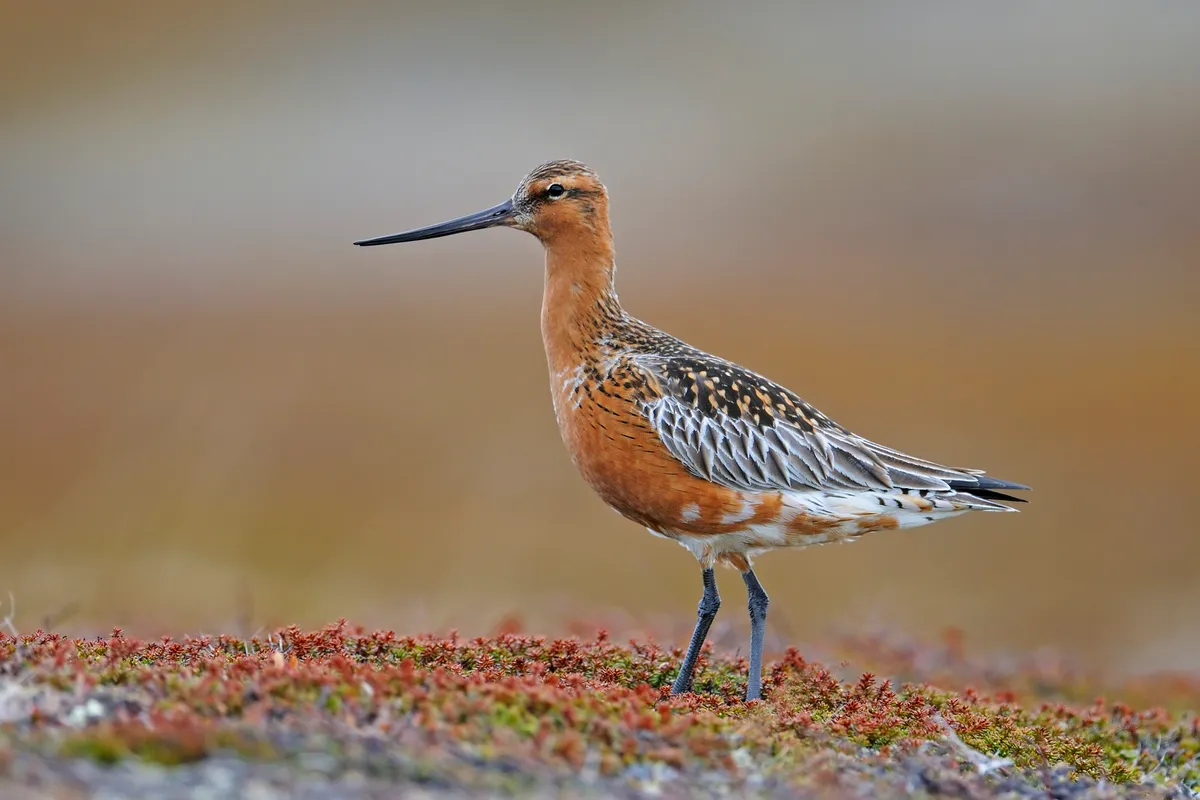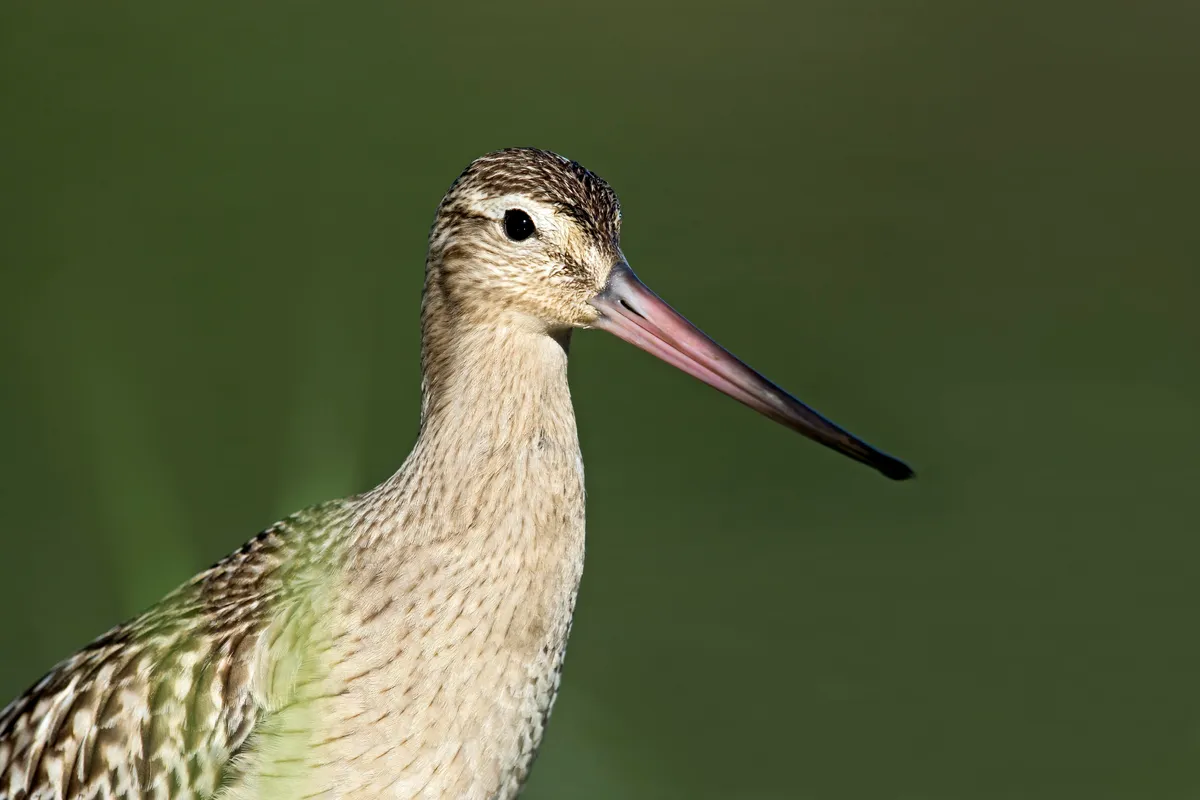Late summer is an exciting time for British birders, as waders begin flooding to our relatively mild shores from further north and east.
Bar-tailed godwits breed from northern Norway through northern Russia and beyond to Alaska. Only 12,000 years ago, at the end of the last ice age, these Arctic breeding grounds would have been covered in ice, but since then the godwits have evolved a suite of different migration routes and strategies.
The number of bar-tailed godwits in the UK increased from mid-summer to peak numbers between November and February. Some non-breeding birds can remain in the UK during summer.
How to identify bar-tailed godwits
There are two godwit species found in the UK, the bar-tailed godwit and the black-tailed godwit, and learning to tell the difference between the two can take a bit of practice.
A barred tail distinguishes bar-tailed godwits from taller black-tailed godwits, both of which winter in the British Isles. Bar-tails prefer sandier estuaries, while black-tails like mud and wet grassland.
Godwits can also be aged. Pale feathers wear more quickly than dark ones, so the patterned tertials – the innermost wing feathers – of juvenile godwits become notched. This can be used to determine a bird’s age until its adult feathers arrive.
Newly arrived from their Arctic breeding grounds, some juveniles may not have finished growing their bills, which will become more upturned. Females have longer bills than males, giving them access to prey buried deeper in the sand in cold, wintry conditions.
Where do bar-tailed godwits breed?

Bar-tailed godwits breed in the Arctic, in Scandinavia and Siberia.
How do bar-tailed godwits migrate?
Bar-tailed godwits hold the world record for migratory flight by a land bird, flying over 11,000km non-stop. How do they manage such a feat?
The bar-tailed godwits we see in Britain have a comparatively easy journey, setting off from northern Scandinavia and Russia on a course between west and south-west, with only a short North Sea crossing to contend with. In contrast Eastern Russian birds, which head south to the Yellow Sea of China and then on to Australia, face much longer sea crossings. But even their feats are dwarfed by those of Alaskan breeders, which spend between five and nine days in continuous flight above the Pacific.
Satellite tags have recently shown that Alaskan godwits can fly over 11,000km without stopping – a new extreme in avian flight performance. Bob Gill, a biologist with the US Geological Survey in Anchorage, Alaska, and his team suggest that transoceanic winds help to give the birds a boost. They also point out that these long-haul migrants are under less predation pressure than British bar-tailed godwits, and never experience winter conditions.
Adult godwits wintering in the UK have previously learned the route from the Arctic coast of Scandinavia or Russia, or even central Siberia, but youngsters such as these have to rely on an innate sense of direction when migrating for the first time.
Before migrating a bar-tailed godwit will lay down lots of fat to power its hard-working heart and wing muscles. Some long-haul migrant waders even partially digest their internal organs to save weight and provide additional fuel for the flight.
What do bar-tailed godwits feed on?
Bar-tailed godwits can be seen feeding on the shoreline and in large estuaries, feeding on shellfish and other small marine invertebrates, including worms and shrimp.
What is the scientific name of the bar-tailed godwit?

The scientific name of the bar-tailed godwit is Limosa lapponica.
Main image: Bar-tailed godwit walking along the shoreline, Bamburgh, Northumberland, England, UK. © Adam Seward/Getty




